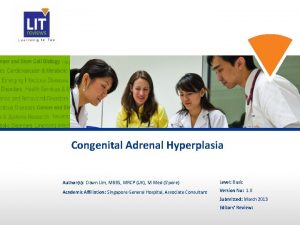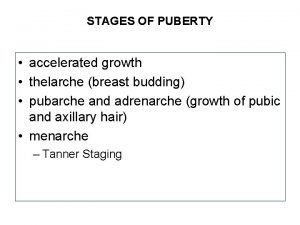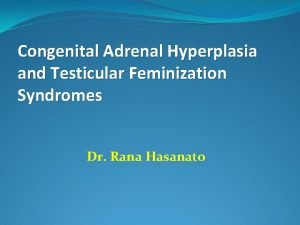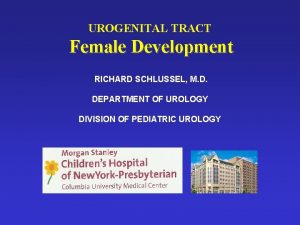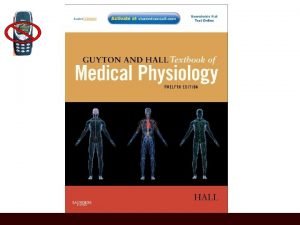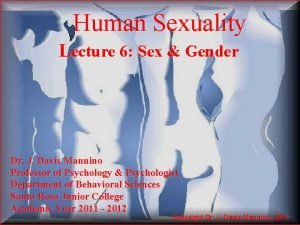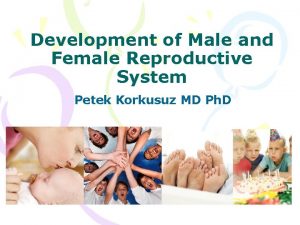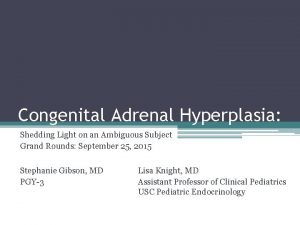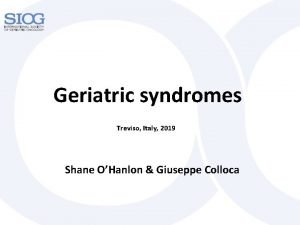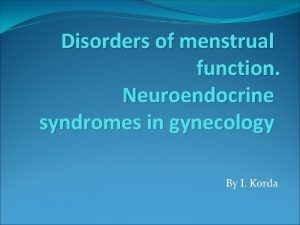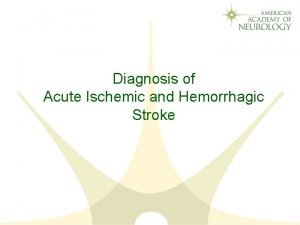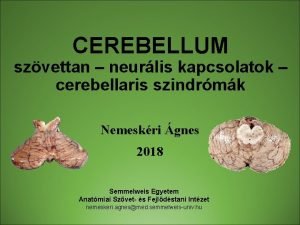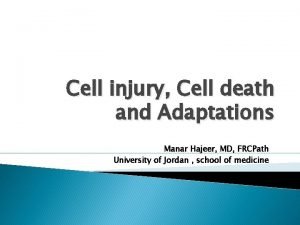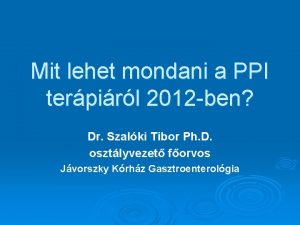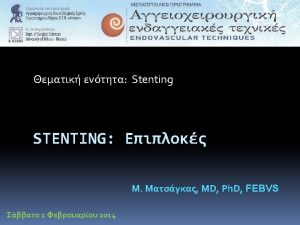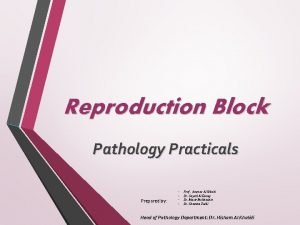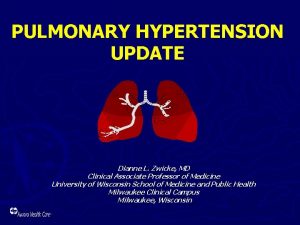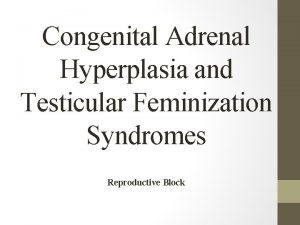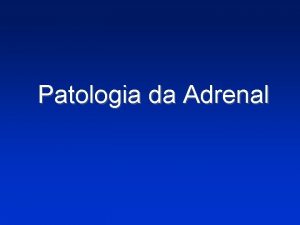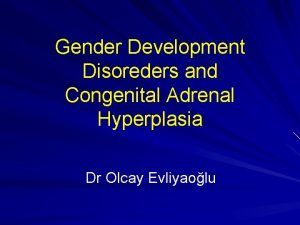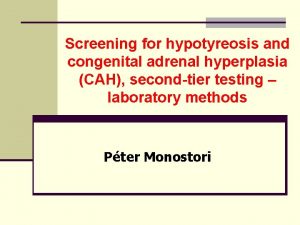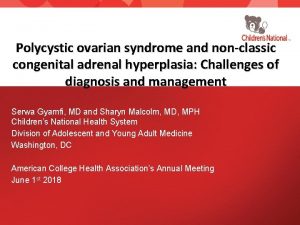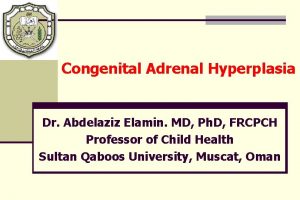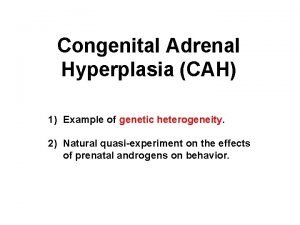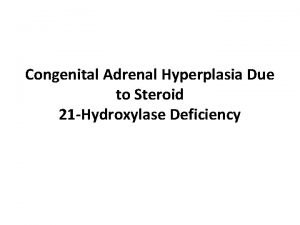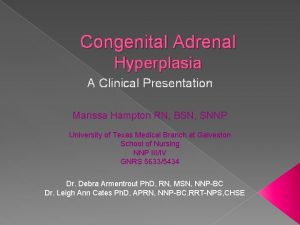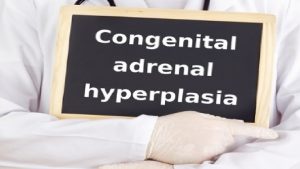Congenital Adrenal Hyperplasia and Testicular Feminization Syndromes Dr























- Slides: 23

Congenital Adrenal Hyperplasia and Testicular Feminization Syndromes Dr. Ahmed Hussain A. Mujamammi

Objectives • Adrenal steroidogenesis • Congenital adrenal hyperplasia syndrome Types Biochemical characteristics Clinical manifestations • Testicular feminization syndrome

Adrenal Glands The adrenal glands comprise 3 separate hormone systems: The zona glomerulosa: Secretes aldosterone The zona fasciculata & reticularis: Secrete cortisol & the adrenal androgens The adrenal medulla: Secretes catecholamines (mainly epinephrine)

Hermaphroditism or Intersex �A person who has neither standard male or standard female anatomy. Discrepancy between the type of gonads and the external genitalia �True hermaphrodite (ovary plus testis) �Female pseudohermaphrodite (FPH, only ovary) �Male pseudohermaphrodite (MPH, only testis)

Glucocorticoids & Mineralocorticoids • Glucocorticoids: • Steroids with cortisol-like activity • Potent metabolic regulators & immunosuppressants • Mineralocorticoids: • Steroids with aldosterone-like activity • Promote renal sodium reabsorption

Steroidogenesis and Congenital adrenal hyperplasia syndrome


Congenital Adrenal Hyperplasia (CAH) Syndromes �It is the result of an inherited enzyme defect in steroid biosynthesis �The adrenals : �Cannot secrete cortisol absent negative feedback to the pituitary) ACTH continues to drive steroid biosynthesis adrenal hyperplasia and accumulation of cortisol precursors (depending on which enzyme is lacking) �Cannot secrete aldosterone electrolyte disturbances �Hyponatremia �Hyperkalemia �The condition might be fatal unless diagnosed early

CAH Syndromes q 21 -Hydroxylase deficiency q 17 -Hydroxylase deficiency q 3 -Hydroxysteroid dehydrogenase deficiency

21 -Hydroxylase Deficiency • The most common type of CAH (90%) • Clinically: Ø Complete enzyme defect: stimulation of adrenal androgen production virilization in baby girls & precocious puberty in boys. Ø Partial enzyme defect late onset form menstrual irregularity & hirsutism in young females. • Laboratory diagnosis: plasma [17 -hydroxyprogesterone] as early as 4 days after birth

In peripheral tissues X X 21 -Hydroxylase Deficiency Virilization of ♀ Precocious sexual development in ♂

21 -Hydroxylase Deficiency…………. CONT’D • Autosomal recessive condition • Impaired synthesis of both cortisol & aldosterone • [cortisol] ACTH secretion Adrenal gland hyperplasia • Accumulated 17 -hydroxyprogesterone are diverted to the biosynthesis of sex hormones signs of androgen excess: • Ambiguous genitalia in newborn girls (FPH) • Rapid postnatal growth in both sexes • Severe cases: mineralocorticoid deficiency salt & H 2 O loss hypovolemia & shock neonatal adrenal crisis • Late presentation (adult life) is possible in less severe cases

21 -Hydroxylase Deficiency: Genetics �Mutations in the CYP 21 gene �Deletions �Nonsense �Missense � DNA testing: For prenatal diagnosis and confirmation of diagnosis

21 -Hydroxylase Deficiency: Diagnosis • Serum sample taken at least 2 days after birth (earlier samples may contain maternally derived 17 -hydroxyprogesterone) • Classic (complete) deficiency is characterized by markedly elevated serum levels of 17 -hydroxyprogesterone • Late-onset (partial) deficiency may require corticotropin (ACTH) stimulation test: • Measure base-line and stimulated levels of 17 hydroxyprogesterone. • High level of 17 -hydroxyprogesterone after stimulation is diagnostic

11 -Hydroxylase Deficiency leads to high concentrations of 11 -deoxycortisol Leads to high levels of 11 -deoxycorticosterone with mineralocorticoid effect (salt and water retention) Suppresses renin/angiotensin system low renin hypertension Masculinization in females (FPH) and early virilization in males

X X In peripheral tissues 11 -Hydroxylase Deficiency Virilization of ♀ Precocious sexual development in ♂

Testicular Feminization Syndrome (Androgen Insensitivity Syndrome)

Disorders of Male Sexual Differentiation • They are rare group of disorders • The defect may be in: • Androgen receptors (inactive androgen receptors target tissues cannot respond to stimulation by circulating testosterone; e. g. , Testicular feminization syndrome)

Control of testicular function by the gonadotrophins Hypothalamus Gn. RH - + - Anterior Pituitary FSH + + LH Testis Inhibin Testosterone AR Spermatogenesis Peripheral tissue

Testicular Feminization Syndrome � 46, XY karyotype �X-linked recessive disorder �Androgen receptor resistance high testosterone blood level �In peripheral tissue, testosterone will be converted by aromatase into estradiol feminization �Patients have normal testes & produce normal amounts of müllerianinhibiting factor (MIF), therefore, affected individuals do not have fallopian tubes, a uterus, or a proximal (upper) vagina.

Clinical Picture: • Complete androgen insensitivity syndrome (CAIS): female external genitalia with normal labia, clitoris, and vaginal introitus (MPH) • Partial androgen insensitivity syndrome (PAIS): mildly virilized female external genitalia (clitorimegaly without other external anomalies) to mildly undervirilized male external genitalia (hypospadias and/or diminished penile size)

Laboratory Diagnosis Karyotype: differentiate an undermasculinized male from a masculinized female. Fluorescent in situ hybridization (FISH): Presence of a Y chromosome can be confirmed by probes for the SRY region of the Y chromosome. These offer a much quicker turnaround time than conventional karyotypes. Increased (or normal) testosterone and dihydrotestosterone blood levels DNA tests and mutation analysis for androgen receptor gene: Complete or partial gene deletions, point mutations, or small insertions/deletions

Further Investigations Imaging Studies “Pelvic ultrasound”: Absence of fallopian tubes and uterus
 Dr dawn lim
Dr dawn lim Congenital adrenal hyperplasia characteristics
Congenital adrenal hyperplasia characteristics Site:slidetodoc.com
Site:slidetodoc.com Congenital adrenal hyperplasia genitalia
Congenital adrenal hyperplasia genitalia Congenital adrenal hyperplasia
Congenital adrenal hyperplasia Testicular feminization syndrome
Testicular feminization syndrome Testicular feminization syndrome
Testicular feminization syndrome Testicular feminization syndrome
Testicular feminization syndrome 21 hydroxylase deficiency
21 hydroxylase deficiency Tromboemboly
Tromboemboly What is geriatric syndromes
What is geriatric syndromes Neuroendocrine syndromes in gynecology
Neuroendocrine syndromes in gynecology Brainstem stroke syndromes
Brainstem stroke syndromes Feminization hypothesis
Feminization hypothesis Nemeskéri ágnes szövettan
Nemeskéri ágnes szövettan Cerebellar syndromes
Cerebellar syndromes Hyperplasia and hypertrophy difference
Hyperplasia and hypertrophy difference Projektov�� mana����r
Projektov�� mana����r Sebaceous hyperplasia
Sebaceous hyperplasia Fundus mirigy hyperplasia
Fundus mirigy hyperplasia Intimal hyperplasia
Intimal hyperplasia Seminal vesicle
Seminal vesicle Intimal hyperplasia
Intimal hyperplasia Pulmonary hypertension
Pulmonary hypertension
